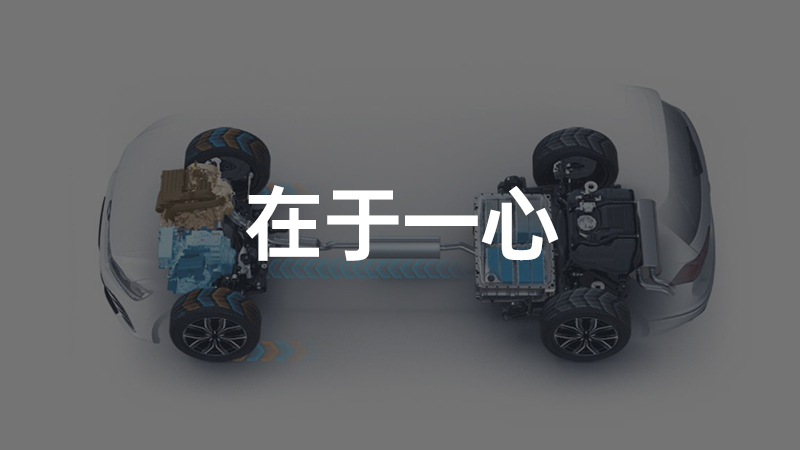The lonely Touareg
Volkswagen has a special import channel, where it specially sells Volkswagen-branded cars imported from other countries to supplement the monotony of the products of its two joint ventures.
During the prosperous period, this special sales network had a very rich product spectrum-Up!, Scirocco, Golf R, Golf Cabriolet, Golf Variant, Passat Variant, Eos, imported CC, Beetle, imported Tiguan, Touareg, Phaeton, and Multivan.
However, with Volkswagen’s weak response to China’s National VI emission standards and insufficient investment in new energy, the imports of Volkswagen’s products were disrupted, and dealers were forced to withdraw from the market due to a lack of vehicles to sell.
Only the remaining Volkswagen import 4S stores, with their huge storefronts, can only sell one product-Touareg.
Oh, I forgot, there is one more: the imported electric Golf.
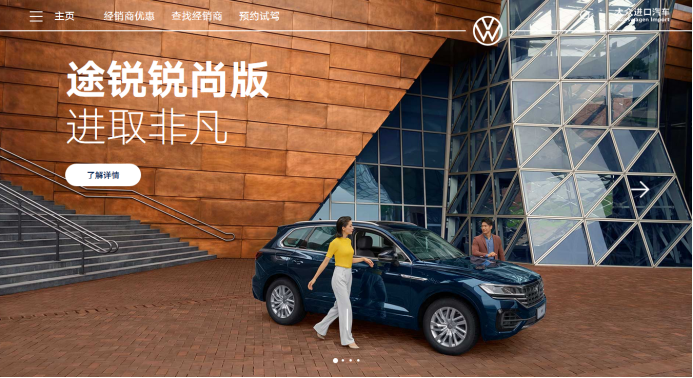
The story of the dieselgate
Volkswagen’s electrification route wasn’t initially so radical.
The core of the electric vehicle is batteries, which are actually controlled by Asians, as seen in GM’s good cooperation with LG and Tesla’s relationship with Panasonic.
Germany’s initial idea for cutting carbon emissions was to transition with diesel cars and PHEVs.
The diesel story is probably well known to everyone.
In 2013, the International Council on Clean Transportation(ICTT) commissioned the University of West Virginia to conduct 15 road emission tests on vehicles, including three diesel vehicles-2012 Jetta (Sagitar) TDI, 2013 Passat TDI, and 2013 BMW X5 diesel.
The final test results were shocking-two Volkswagen TDI models actually emitted far more nitrogen oxides on the road than the standard- one exceeded the limit by 15-35 times, and the other by 10-20 times. In contrast, the BMW X5 was mostly normal, only exceeding the limit on uphill roads.
The magical thing was that these two Volkswagen TDI models had all their indicators back within the normal range during laboratory emission testing.
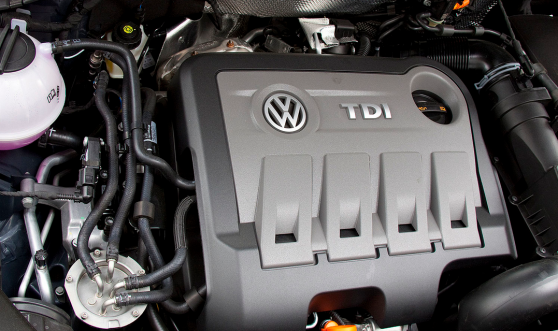 Behind this lies a magical logic – Volkswagen has designed a “back door” program in vehicle calibration. When the vehicle detects certain indicators, such as the steering wheel not turning, front wheels not turning behind wheels or if the throttle input complies with the emission test, once the vehicle detects that it is running a “pollution test”, the system will automatically start another set of engine output calibration – reducing the engine output power, changing the gearbox shift logic, and causing the vehicle performance to decrease to meet fuel consumption standards. (It is worth mentioning that performance degradation is a solution for many old models to pass the China 6, such as the hybrid Alfa.)
Behind this lies a magical logic – Volkswagen has designed a “back door” program in vehicle calibration. When the vehicle detects certain indicators, such as the steering wheel not turning, front wheels not turning behind wheels or if the throttle input complies with the emission test, once the vehicle detects that it is running a “pollution test”, the system will automatically start another set of engine output calibration – reducing the engine output power, changing the gearbox shift logic, and causing the vehicle performance to decrease to meet fuel consumption standards. (It is worth mentioning that performance degradation is a solution for many old models to pass the China 6, such as the hybrid Alfa.)
Since ancient times, power and fuel consumption/emissions have been a pair of contradictory logic. Volkswagen’s TDI technology claims to be powerful, fuel-efficient, environmentally friendly, and does not require adding a catalyst – which is completely impossible.
Finally, from 2014, when US institutions discovered that the actual emissions of Volkswagen’s diesel cars were far greater than the test conditions, to today, Volkswagen has lost 30 billion euros, used to pay fines around the world, and recall and repair the emission problems of diesel vehicles.
Among them, the failure to start the China 6 project on time is also related to Volkswagen’s diesel gate scandal – whether it is engineering resources or cash resources, they have been invested in this bottomless pit.
Electrify America
And in this 30 billion euros, there is a long-term investment of 2 billion US dollars, which is used for a very interesting thing – building electric vehicle charging stations in the United States.
This charging station company is called – Electrify America
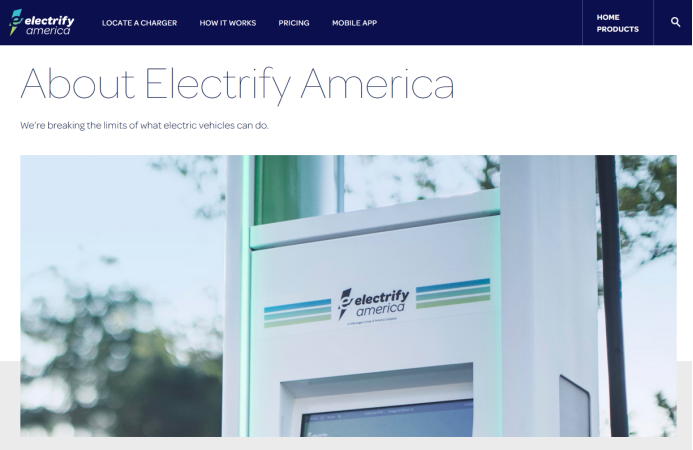
Through the official website of this company, it can be seen that since 2016, this company plans to invest 800 million US dollars in California and 1.2 billion US dollars in other parts of the country through a 10-year investment cycle, for building a charging network and promoting the popularity of electric vehicles.
As of the end of 2019, Electrify America has installed more than 2,000 fast charging stations, distributed in 500 charging networks in 42 states.
According to information from the State Grid, as of October 2019, the State Grid has constructed 2,080 fast charging stations with a total of 8,423 fast charging stations.
It can be said that Volkswagen has achieved one-fourth of the level of the State Grid in China alone, which is quite hard.
Diesel vehicles have cooled down, charging stations have been built, and consumers have been educated, so what else can be done?
There is only one way to go – All in BEV.
A few days ago, there was an interesting interview with the CEO of Volkswagen China, Stephan Wöllenstein.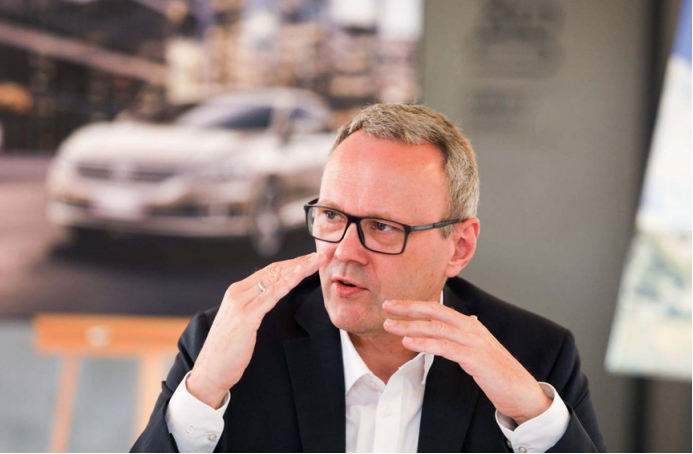
In fact, as mentioned in a previous article by the company president, there is no absolute superiority or advanced technology when it comes to the technical route, only whether it is suitable or not.
During an interview, the leaders of Volkswagen China expressed a certain degree of negative evaluation of the extended range technology, believing that it is not an “environmentally friendly” technology.
Subsequently, they believed that pure electric is truly environmentally friendly.
However, fundamentally, Volkswagen’s pure electric strategy is built on the foundation of “diesel engine emissions cheating” and “being fined for covering up the charging pile” behavior.
Moreover, due to the image problem caused by diesel emissions, Volkswagen needs to work hard to reduce the negative public image of “Volkswagen diesel” and adopt the “diesel-free” route. Currently, in Europe, nearly 50% of the models sold are equipped with diesel engines.
Therefore, while other major automakers are experimenting with one or two pure electric models – such as the Jaguar I-PACE, Mercedes EQC, and even the BMW iX3, Volkswagen has already announced its modular electric vehicle platform – MEB, as well as its aggressive product spectrum and sales plan.
Finally, not only is the ID3 unable to be delivered due to software issues, but the company president also did not see any special highlights in the product, such as the ID.3 or the subsequent ID.4.
One can’t help but sweat a little for this aggressive plan.
Interestingly, a few days ago, Volkswagen Group CEO, Herbert Diess, met with Tesla CEO, Elon Musk, at an airport and invited Musk to test drive his company’s ID.3.
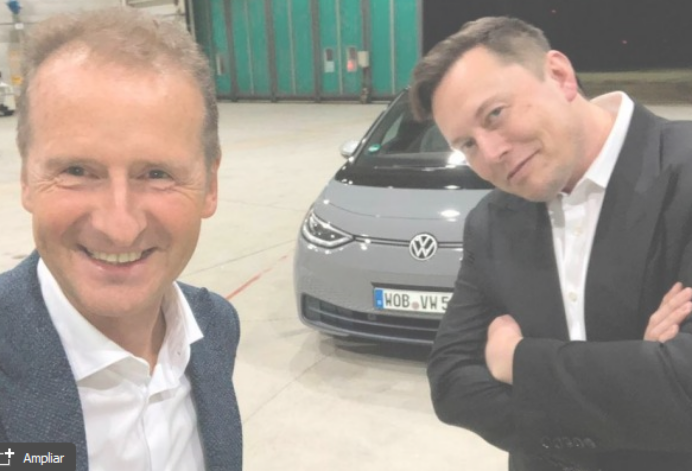
Diess only emphasized one sentence – this is a mainstream vehicle for the public, meaning that our performance will be relatively mediocre.
As if the Model 3 is not a mainstream product for the public.
Transitional PHEV
In terms of Volkswagen’s transitional technology – PHEV, it is even more interesting.
Fundamentally, Volkswagen’s PHEV is a very simple technical route – the single-motor P2 scheme.
This scheme adds a motor between the engine and the dual-clutch transmission. In pure electric mode, this large motor will drive the transmission and output power to the wheels.
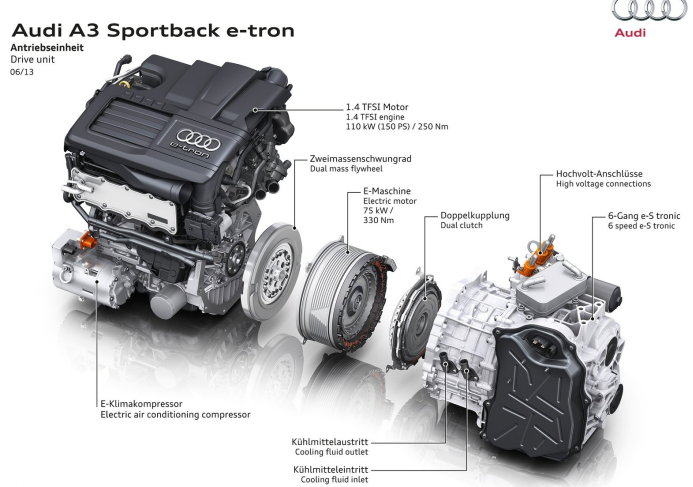 However, when powering the vehicle, due to having only one motor, it cannot easily achieve the “peak-shaving and valley-filling” between the motor and the engine, like in Toyota’s hybrid system or the GM Velite 5/6. This leads to relatively low fuel efficiency, and even in some driving conditions, higher fuel consumption than equivalent gasoline vehicles, such as during long-term highway driving.
However, when powering the vehicle, due to having only one motor, it cannot easily achieve the “peak-shaving and valley-filling” between the motor and the engine, like in Toyota’s hybrid system or the GM Velite 5/6. This leads to relatively low fuel efficiency, and even in some driving conditions, higher fuel consumption than equivalent gasoline vehicles, such as during long-term highway driving.
Therefore, I really don’t understand the logic of the CEO of Volkswagen China, Stephan Wollenstein. At the event, he said:
“I drive a Passat GTE (PHEV) every day in Beijing, and mainly use the pure electric mode in the morning. If traffic is smooth on the Fourth Ring Road when I leave work in the evening, I choose the hybrid mode to enjoy the driving fun.”
I don’t understand what he means – does pure electric vehicles lack driving fun, and only PHEVs with shift gears have fun?
Or is it that this kind of PHEV with a 50 km range developed for “regulations and policies” can only last for a morning on electric power and can’t be driven home in pure electric mode after work?
Quality Comes from Heartfelt Effort
The President has driven many types of vehicles – manual, automatic, CVT, hybrid, range-extended, plug-in, and pure electric.
However, driving pleasure does not depend on the type of drive, because there are both bad and excellent CVTs and both bad and excellent pure electric motors.
I found that the manual transmission knob of my Mazda 2, the original equipment, is heavier than the modified one.
I also bought a 1.4T manual model of a certain brand – with an excellent imported manual transmission, but installed on this weak engine, it was a disaster.
I have driven excellent hybrid models – Accord hybrid, which is almost perfect.
I have driven excellent range-extended models – Velite 5 and ONE, which are all very satisfying driving experiences.
I have also driven electric vehicles that are as bad as trash – the kind of “car parked downstairs, but I prefer to walk” feeling of being out of control.
In the end, I came up with a conclusion:
Whether a car has “driving pleasure” or not does not depend on what technology is used.
It depends only on whether the development team is really putting heart and effort into making cars.
Only a product developed with heart can truly impress consumers and resonate with them.
And those products that deceive people because of policies, politics, and profits may achieve financial success for a time, but they will never be good products.
Reference:
“Conspiracy or Self-inflicted Suffering: How Was Dieselgate Exposed?” – Carzone
https://www.xincheping.com/tribe/art/228239.html
“Conspiracy or Self-inflicted Suffering: Why Did Volkswagen Take a Chance?” – Carzone
https://www.xincheping.com/tribe/art/228340.htmlVolkswagen: Fixing the cheating EA189 engine with just one “patch” – Sohu Auto
Electrify America Official Website
Information on State Grid Charging Stations
This article is a translation by ChatGPT of a Chinese report from 42HOW. If you have any questions about it, please email bd@42how.com.
